Testing the HTC (Re) Vive with Steam VR: Better than Oculus…?
by Ian Cutress on March 4, 2015 1:00 PM EST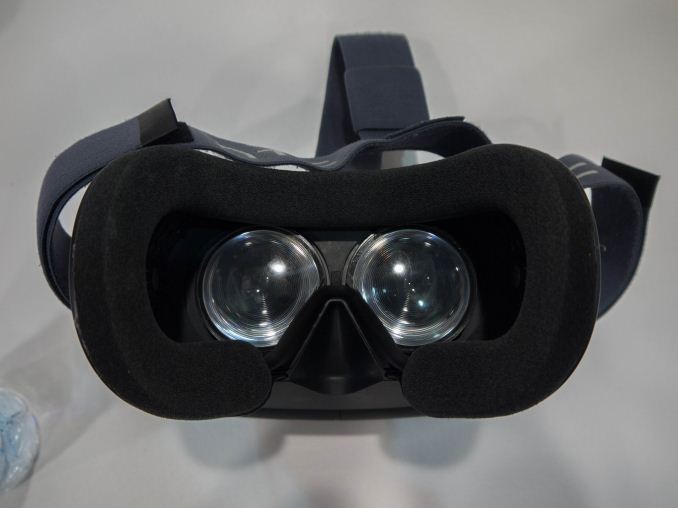
One of the big announcements to come out of Mobile World Congress this week is regarding HTC’s new VR headset, called the Vive or ‘Re’ Vive, depending on where you see it, and their collaboration with Valve who appears to be providing the software backbone for the hardware. As part of our rush of MWC meetings, HTC invited me (only one person per publication) to experience the Vive developer kit with Steam VR. Having tested the Oculus Rift ‘Crescent Bay’ model at CES and having had a chance to sample Samsung’s Gear VR while here for a few minutes, it is interesting to feel how the VR experiences differ.
At this point in time, HTC is releasing next to no specifications about their developer kit, and the embargo placed today was purely for experiential testing. We were only able to take pictures of the device, and not the room in which it was being tested. Thus the following is purely from my perspective of using the kit and the pre-programmed demos that were provided. Overall each person was allowed 20 minutes to cycle through the demos, similar to that from Oculus at CES.
Functionally I was lead into a near empty room several meters square, put on the headset, and a HTC employee placed a set of headphones over my ears. When the demo started up, the guide held up two controllers, one for each hand. Within the headset, I saw the controllers represented on the screen and reached out to them. The headset and controllers both had a number of wires coming from them, but I was told that the end goal is to make the controllers wireless, and the headset would in the final version have only a single mini-HDMI cable to provide the bandwidth for the display.
The two controllers were designed such that one is for each particular hand with a depressed pad on each (kind of like the initial Steam box controller renders), along with a rear trigger and two grip buttons. Within the first demo, depressing the left trigger caused a balloon to appear from the controller, which I could then let go and punch away with either controller. After a few balloons the main demo began.
The first scene was a basic white field to describe the motions of the set up. I could move my head, walk about 2 meters in each direction before hitting an invisible wall (or an actual wall), as well as duck to get a different perspective from close to the ground. The white field was filled with columns moving up and down to get a sense of perspective.
The next scene was interactive – I was in a kitchen in front of a chopping board with vegetables, with a pot on the hob to my right and a robot helper ahead. With some mild instruction, I used the controllers and the triggers to pick up some of the objects. I put some bread into the pot and threw the rolling pin at the robot helper (to which I was thanked). I also dropped a steak accidentally on the floor, and without hesitation I bent down and picked it up, then threw it across the room. (Pretty much what happens back when I’m in charge of the kitchen anyway.) Turning to my left, I walked towards a fridge which opened automatically with more ingredients inside. I took out a steak, turned to the left again, and using my other controller moved towards a button on the microwave. The door swung open, I placed the steak inside, then I also grabbed a bottle of wine from next to the microwave and put it in as well, before shutting the microwave door how I would normally do so at home. Next to the microwave was a chopping board with a knife and an onion, and when I picked up the knife to cut the onion, it shattered. I couldn’t pick up the pieces of the knife (a safety feature I was told), but I was able to place the onion on a plate and interact with a bell to get the plate taken away.
The second scene put me onto the deck of a sunken ship, surrounded by rotting wood and schools of fish. When I moved around I could see how far down the ship went, but when a fish swam into my face I tried to swat it away, knocking the controller into the headset. After a couple of moments a big whale swam by with the detail on the whale being quite clear. The movement was also smooth, perhaps indicative of 60-90 Hz, but it was not 120 Hz.
The third demo was an example of how the hardware and software can be used in a creative context (I mean more creative than microwaving wine). This was essentially a paint program but allowed the artist to draw in 3D. The right hand was the brush, while using a combination of controls on the left hand allowed the left to act like a palette. I was able to do a full RGB selection similar to most imaging programs, as well as change the type of brush from something more normal to oil paints or a rainbow. I was able to move around in 3D as well, drawing from different perspectives. There was an obligatory drawing of something rude, but then I examined how accurate the software was. It seemed that I could draw with a granularity of about 15mm, especially when drawing long lines. But software like this could be used by developers interested in making and viewing 3D models with immersion and getting a feeling for the size of whatever is being created.
The next demo was best described as a table top game coming to life. I started standing in the middle of the table, watching a faction in a castle fighting off some invaders. In true table-top style everything looked a bit small. But I was able to walk around the scene viewing it from different angles both outside and in the table itself. I was also able to peer inside the 3D models, to get perspectives that would not otherwise be available in the real world.
The final demo was somewhat of a treat. In true Valve fashion I was thrust into a Portal based room with GLaDOS issuing commands over a loud speaker. The artistry was pure Portal through and through, with Portal 2 based figurines. GLaDOS issued commands to open drawers, which the game allowed you to open the wrong drawer twice before opening the right drawer. In the second incorrect drawer was a piece of really old cake, but there were experiments to run and research to be done – thankfully I was still alive so I continued with the demo and opened the right drawer which housed a small Portal stick figure community. Unfortunately GLaDOS told me that looking into the drawer would cause the community to worship me as a god and in the end we had to close the drawer and there was the sound of something burning. I then walked over to the other side of the room and was instructed to open a door via a lever, causing a damaged Portal 2 robot to stumble into the room and be attached to a harness. GLaDOS instructed me to repair the robot by pulling a few parts before giving some incomprehensible instruction that caused the robot to disintegrate. The robot parts were cleared and the walls dismantled to show GLaDOS who expressed disappointment - 'Oh, it's you...'. At this point I was on a small segment of floor while I could see far and wide into the Portal underground moving bits around, before the walls around me were quickly rebuilt into what looked like the start of a Portal level. There was even a companion cube.
Thus ended the demo.
The interactivity in each of the demos was great, and it felt natural. Aside from the commands from the HTC guide coming through the headset explaining what was going on (it was a two way conversation, I asked about the hardware), I felt immersed. I could just about see the pixels in the set, but the two controller method for some of the tasks felt like the right thing to do. The PC hardware used for the demo was a single GPU system (I was told a current generation high end card), indicating that no massive tri-SLI system is needed at this point. For a couple of the demos (such as the table top), the scene was a little blurry but I have experienced this before on VR demos – on the large scale everything seems great, but some of the low resolution demos on small models can cause some defocusing. That being said, the Portal demo was filled with detail and I had no issues there, even though there were some intricate detail within the models.
It was difficult to ascertain what kind of technology the display was using due to the lack of consistent black areas, but there was no discernable backlight bleed during gameplay. Unlike Oculus, although I didn’t specifically think about it during the demo there seemed to be a lack of directional audio, as in computation based on hard direction, but I may be mistaken. I felt I was in the moment, and although there was not some massive movement scene similar to the Oculus demo, the package did feel like it could compete.
The headline for this piece ‘Better than Oculus’ is supplanted by a question mark. It is difficult to pick between the two, but if I was forced at gunpoint to spend my own money, I feel it is the HTC model with Steam VR that would get my notes. If not from the hardware perspective, but then the future potential if Valve gets properly onboard with a major title at launch. HTC currently creating units for developers, and is aiming for a 2015 launch. There is talk with regards to several SKUs with the high end one relying on sensors mounted to the wall and perhaps a lower one with gyroscopes. As always with these VR demos, when the devices come to market a key element is going to revolve around content. Here Valve can do serious damage if a big title or two was released along with the headset. The obvious lines are Half-Life 3 and Portal 3, but there was no indication from HTC that anything was going to be mentioned.
The key difference between the HTC and Oculus demos was immersion combined with interactivity. The Oculus demo was technically great, but the interactive elements from HTC along with the Valve input made the experience feel more natural. There are clear hurdles for both implementations, particularly for Oculus on content. Even though Oculus is working with lots of developers, I also inquired about the interoperability between software created for the HTC headset and the Oculus one but the comments pointed towards locking in the software to each device. The HTC/Valve implementation will have to have some bundled content when it goes on general sale and Valve already has the distribution ecosystem in place as well as the gaming franchises to make the world implode.




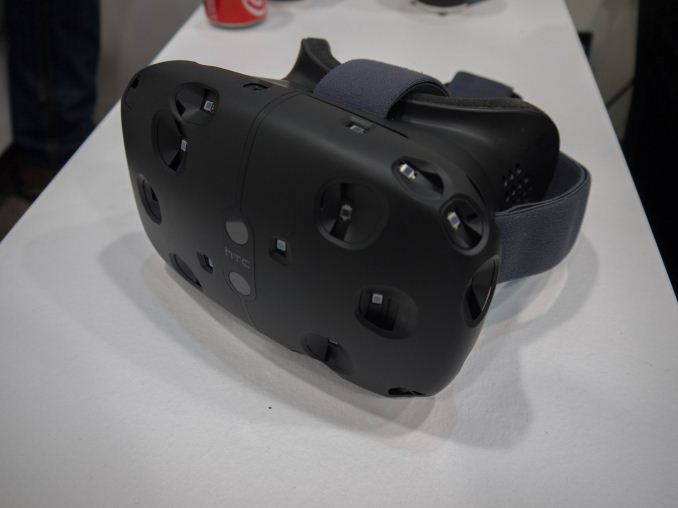
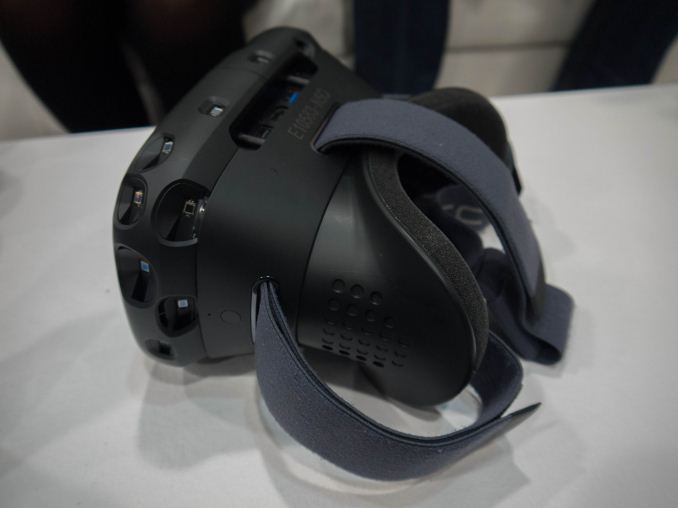






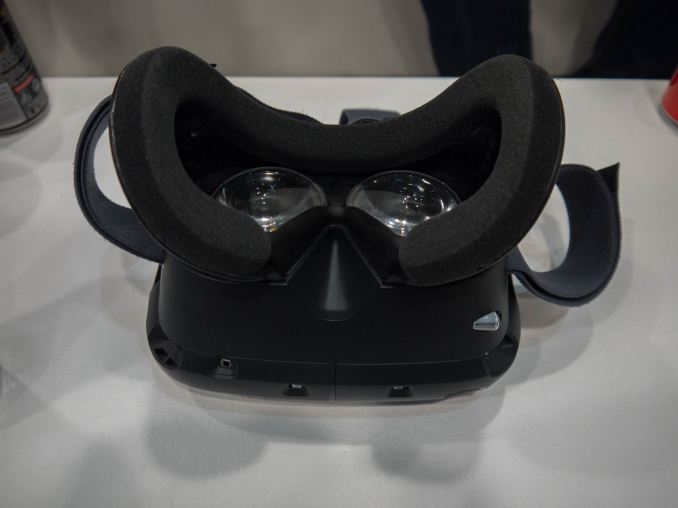
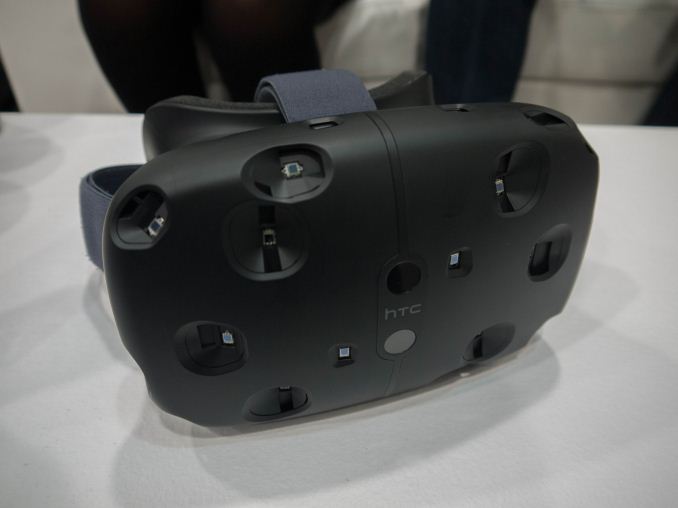








24 Comments
View All Comments
5150Joker - Thursday, March 5, 2015 - link
I can't see myself using this sorta headset for extended periods. And then those that have weak vision will definitely have problems with this. MS hololens seems a much more natural solution but honestly none of these bulky headsets will appeal to a mass audience. It might work for niche uses and in certain games but I'd rather have a nice big display in front of me to game with.Jaosn - Thursday, March 5, 2015 - link
Do people actually believe VR won't take off? That is a silly mindset. With Sony getting into it and Valve it will take off. Sony will get the PS4 users to buy it and Valve will attract enough PC gamers. Oculus will attempt to appeal to your every day user. Your opinion doesn't reflect the majority, but it's cute you believe it does."I don't like VR so clearly nobody likes VR" ~ Said some armchair exec
Shadowmaster625 - Thursday, March 5, 2015 - link
Anything is better than oculus after you-know-what got ahold of it. Oculus is dead.twtech - Thursday, March 5, 2015 - link
This would be a perfect evolution for those laser-tag type places.You have a big room set up with padded obstacles in a warehouse or something of that nature. Then you use 3D mapping software to map that space. Then you create some levels using different environments that correspond to the actual layout of the space.
Players bring/are provided their "military backpack" and "helmet" - Ie. a backpack containing the computer & battery, and a VR headset with integrated audio. Then they run around in there and have their war games or whatever in the virtual environment. If they're trying to play something like CoD or Battlefield, maybe they're also given a prop weapon that interfaces with the game.
If a player dies, they are represented to everyone else in the VR world as a ghost that you can shoot through (but obviously can't run through since the person is still actually there), and their own screen changes to fade out the rest of the world and show an illuminated path away from the combat zone and back to their "respawn" area.